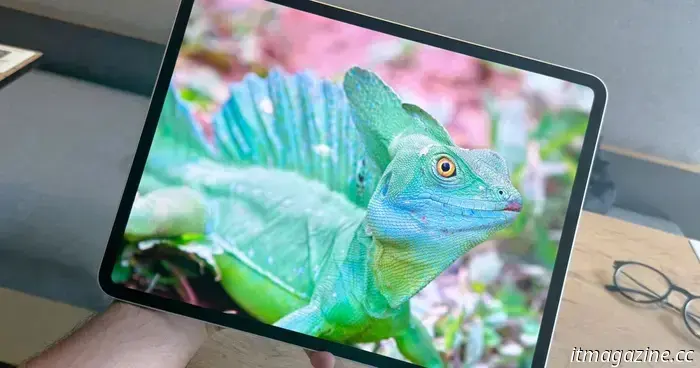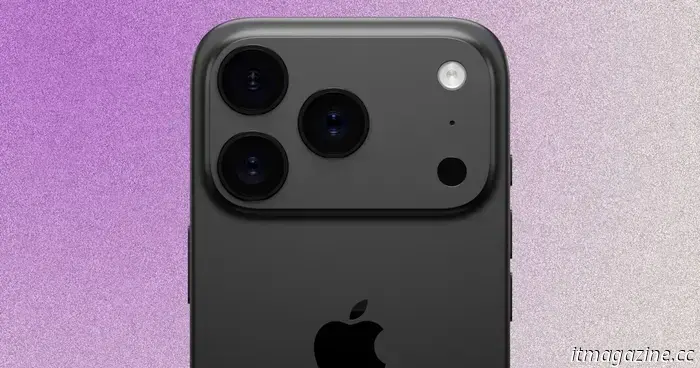
Samsung is turning to iPad technology for the development of new OLED screens for automobiles.
Nadeem Sarwar / Digital Trends
As per industry insiders, Samsung Display is reportedly planning to adopt technology similar to what's utilized in Apple’s iPad displays for the development of automotive OLED screens. This strategic initiative indicates Samsung's ongoing commitment to expanding in the lucrative market for premium vehicle displays.
Technology crossover
According to SamMobile, the South Korean technology leader intends to use tandem OLED technology—currently available in high-end tablets like the iPad Pro—to produce more resilient and energy-efficient displays tailored specifically for automotive use. These displays would provide several benefits over existing in-car screen technologies:
- Increased brightness for improved visibility in direct sunlight
- Enhanced energy efficiency to reduce battery consumption
- Longer lifespan to align with the extended usage cycles of vehicles
- Improved color accuracy and contrast ratios
Market expansion strategy
This initiative forms part of Samsung’s wider strategy to widen its OLED business beyond smartphones and consumer electronics. The automotive display sector is expected to see significant growth in the coming decade, with luxury vehicles increasingly incorporating multiple large-format displays.
Industry experts suggest that Samsung Display is well-positioned to take advantage of this trend, with its established expertise in OLED production and existing partnerships with international automakers.
Competitive landscape
Samsung's initiative arrives amid rising competition in the automotive display market, with LG Display and BOE also making substantial investments in this area. The incorporation of iPad-class display technology could potentially give Samsung a competitive advantage in securing contracts with luxury vehicle manufacturers.
Timeline and implementation
While specific timing details are yet to be revealed, sources indicate that Samsung could commence pilot production of these automotive-oriented tandem OLED displays within the next 12-18 months, with mass production possibly beginning by 2027.
The technology is anticipated to first make its debut in high-end electric vehicles before potentially being adopted across a wider range of market segments.
It will be intriguing to observe how this develops and which manufacturers will continue to utilize Samsung’s OLED technology in their future vehicles.
Bryan M. Wolfe has over a decade of experience as a technology writer, focusing on mobile topics.
Audi pauses vehicle deliveries to the U.S. while assessing the impact of tariffs
If you had been considering purchasing an Audi, now might be a good time to act. The German automotive brand, part of the Volkswagen Group, announced it would suspend shipments to the U.S. in light of President Donald Trump’s 25% tariffs on all imported vehicles. Audi is currently holding cars that arrived after the tariffs went into effect on April 3, at U.S. ports. Nevertheless, it still has about 37,000 vehicles in its U.S. inventory, which should suffice to meet demand for around two months, according to Reuters.
On average, automakers retain enough vehicles to satisfy U.S. demand for approximately three months, as per Cox Automotive. Audi is expected to be particularly impacted by the tariffs since the Q5, its best-selling model in the U.S., is produced in Mexico, while other models like the A3, A4, and A6 are manufactured in Germany.
Halting shipments is clearly a temporary strategy to provide Audi and its parent company Volkswagen with some breathing room. If tariffs remain unchanged, vehicle prices would likely have to increase correspondingly unless production is moved to the U.S. Volkswagen already operates a plant in Chattanooga, Tennessee, and has plans for a new facility in South Carolina, which, however, isn't projected to be operational until 2027 and is currently focused on producing electric vehicles for VW’s Scout Motors brand.
Other international automakers have also taken significant actions in response to Trump’s tariffs. Jaguar Land Rover announced on April 5 that it would suspend shipments of its UK-produced cars to the United States this month. The British luxury vehicle manufacturer pointed out that the U.S. market accounts for nearly 25% of its global sales, prominently featuring models like the Range Rover Sports, Defenders, and Jaguar F-PACE.
On April 3, Nissan, the largest Japanese vehicle exporter to the United States, revealed it would stop accepting new U.S. orders for two Infiniti SUVs manufactured in Mexico, the QX50 and QX55.
Waymo faces scrutiny regarding its use of onboard cameras for AI training and targeted advertising
In a memorable scene from the 2002 science fiction film Minority Report, on-the-run Agent John Anderton, portrayed by Tom Cruise, struggles to navigate a mall as he is bombarded by personalized ads from companies like Lexus, Guinness, and American Express every time hidden detectors recognize his eyes. This was clearly depicted as a warning about a potentially undesirable dystopian reality.
Yet, 23 years later, aspects of that future have partially arrived in the online realm and threaten to proliferate into other increasingly 'connected' areas of daily life, including the interiors of vehicles. According to online security researcher Jane Manchun Wong, the latest testing grounds may be automated driving vehicles such as Waymo’s robotaxis.
Wong shared an unreleased version of Waymo





Other articles
 A quarter of a century following its debut, The Virgin Suicides continues to embody profound humanity.
Since its premiere on April 21, 2000, The Virgin Suicides has proven to be a noteworthy debut feature by Sofia Coppola that has endured over time.
A quarter of a century following its debut, The Virgin Suicides continues to embody profound humanity.
Since its premiere on April 21, 2000, The Virgin Suicides has proven to be a noteworthy debut feature by Sofia Coppola that has endured over time.
 Answers for the NYT Mini Crossword for Monday, April 21.
The NYT Mini crossword may be significantly smaller than a standard crossword, but it's still quite challenging. If you're having trouble with today's puzzle, we have the solutions for you.
Answers for the NYT Mini Crossword for Monday, April 21.
The NYT Mini crossword may be significantly smaller than a standard crossword, but it's still quite challenging. If you're having trouble with today's puzzle, we have the solutions for you.
 The five most promising scaleups in France are joining TECH5's 'Champions League of Tech.'
Five French scaleups have been selected for TECH5, known as the "Champions League of Tech." They will now vie for the title of the leading scaleup in Europe.
The five most promising scaleups in France are joining TECH5's 'Champions League of Tech.'
Five French scaleups have been selected for TECH5, known as the "Champions League of Tech." They will now vie for the title of the leading scaleup in Europe.
 The iPhone 17 may encounter a supply shortage, making it difficult to purchase.
The iPhone 17 could be somewhat more challenging to obtain due to supply chain difficulties.
The iPhone 17 may encounter a supply shortage, making it difficult to purchase.
The iPhone 17 could be somewhat more challenging to obtain due to supply chain difficulties.
 The Hundred Line: Last Defense Academy review: the pupil exceeds the mentor
The Hundred Line: Last Defense Academy enhances the Danganronpa concept, delivering a new and invigorating tactics RPG experience.
The Hundred Line: Last Defense Academy review: the pupil exceeds the mentor
The Hundred Line: Last Defense Academy enhances the Danganronpa concept, delivering a new and invigorating tactics RPG experience.
 Beijing is the venue for the inaugural half-marathon for humanoid robots, with Tiangong Ultra finishing the race in two hours and 40 minutes.
On Saturday, Beijing hosted the inaugural half-marathon for humanoid robots. This event, which combined technology and athletics, saw the participation of 20 teams from Chinese universities, companies, and research organizations, alongside approximately 12,000 human runners competing with the robots.
Beijing is the venue for the inaugural half-marathon for humanoid robots, with Tiangong Ultra finishing the race in two hours and 40 minutes.
On Saturday, Beijing hosted the inaugural half-marathon for humanoid robots. This event, which combined technology and athletics, saw the participation of 20 teams from Chinese universities, companies, and research organizations, alongside approximately 12,000 human runners competing with the robots.
Samsung is turning to iPad technology for the development of new OLED screens for automobiles.
Samsung plans to revolutionize the automotive display market by incorporating iPad OLED technology into vehicles.
